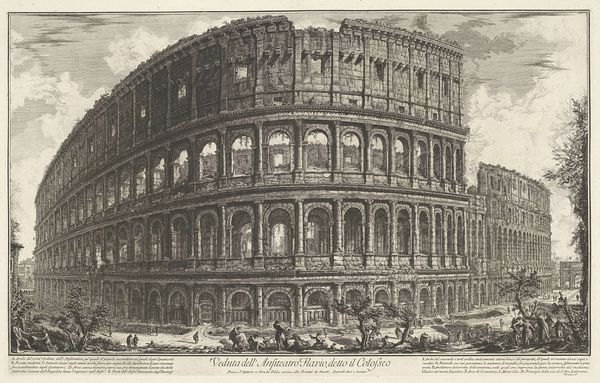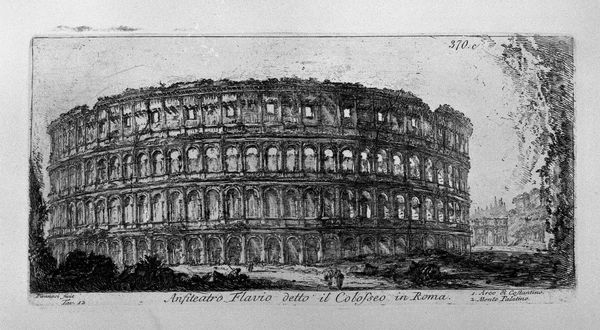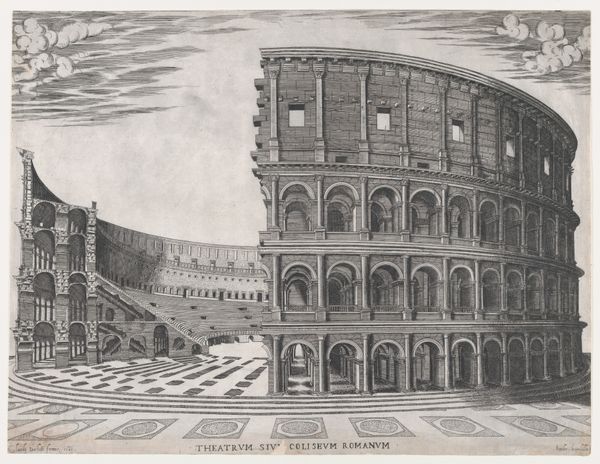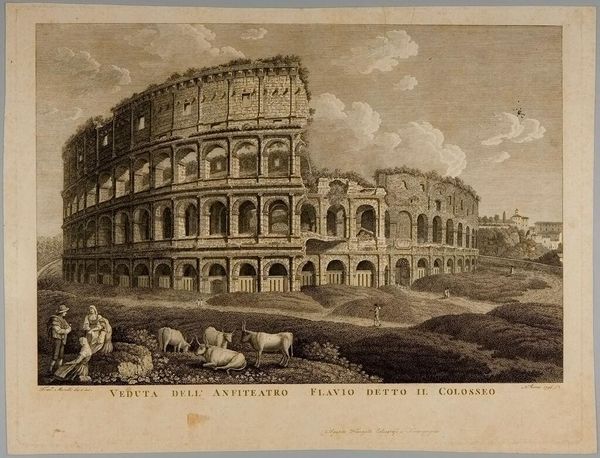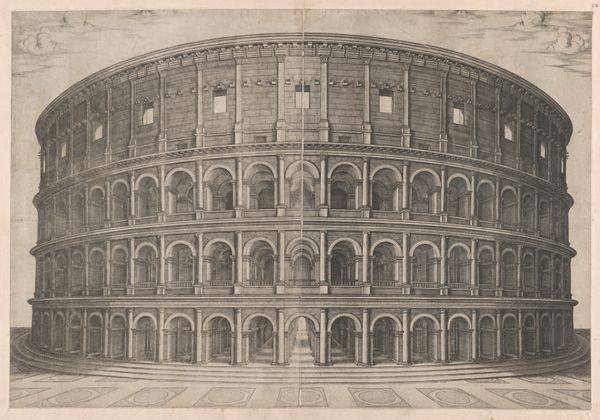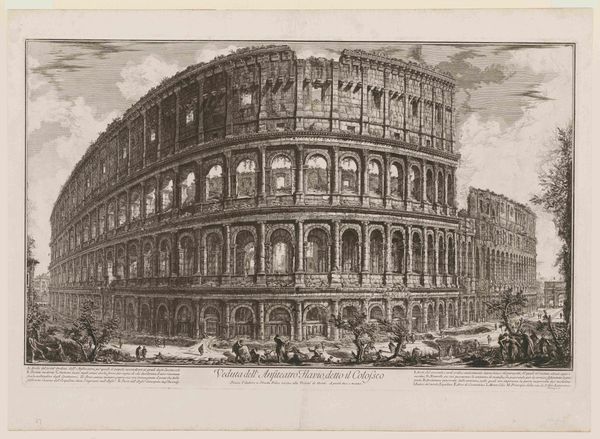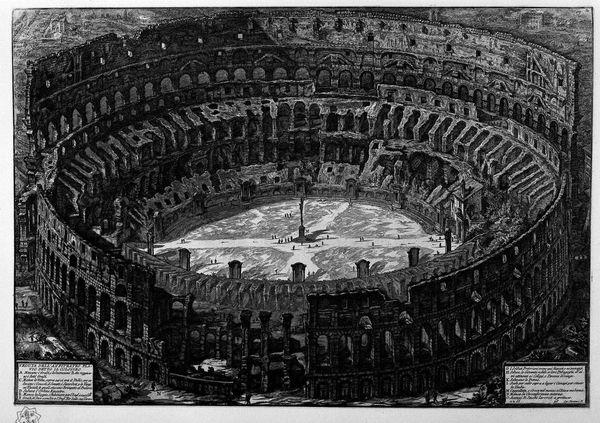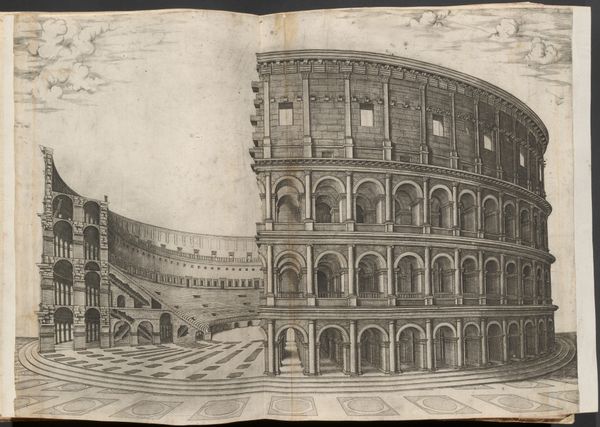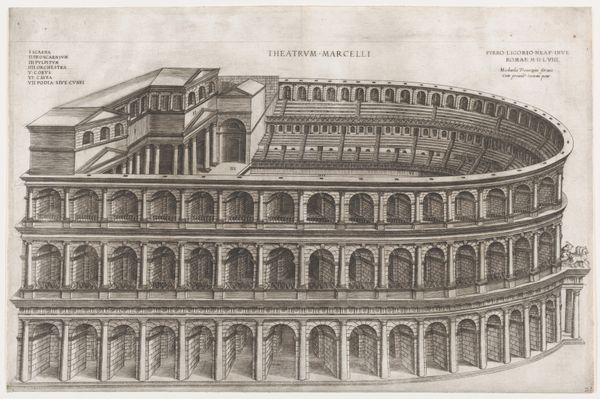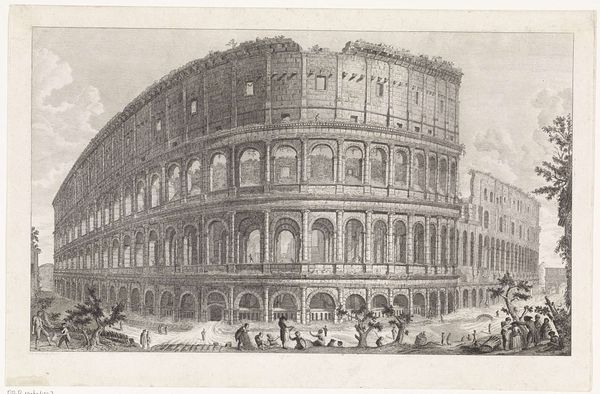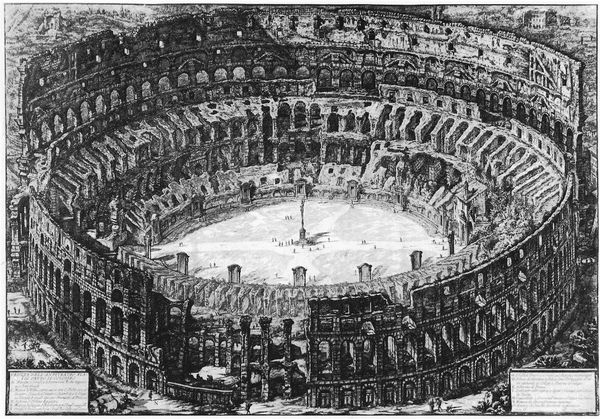
The Roman antiquities, t. 1, Plate XXXVII. View of Flavian Amphitheatre and the Colosseum. 1756
0:00
0:00
print, etching, engraving, architecture
# print
#
etching
#
romanesque
#
geometric
#
arch
#
line
#
pen work
#
cityscape
#
history-painting
#
engraving
#
architecture
Copyright: Public domain
Editor: So, here we have Giovanni Battista Piranesi's etching, "View of Flavian Amphitheatre and the Colosseum," from 1756. There's this striking contrast between the colossal ruin and the tiny figures around it, and I find the etching style really captivating. What do you see in this piece? Curator: I see an echo, a layering of time and cultural memory. The Colosseum, already ancient to Piranesi, represents the grandeur and brutality of the Roman Empire. But it is the *idea* of Rome that is being represented, wouldn't you say? Note how its ruinous state speaks not just of decay, but the transience of power. And that it's rendered in printmaking suggests a desire for wider dissemination of this *idea* of Rome. What does that communicate to you? Editor: It makes me think about how Rome has been romanticized throughout history, almost as an idealized, eternal city... This print feels like it plays into that narrative, even with the crumbling architecture. It is almost as if he is looking for beauty within the remnants of something. Curator: Precisely. Think about the symbols here: the arch, the geometric perfection, all echoing ideas of Roman order, law, and achievement. Even in ruin, those symbols speak powerfully. This also plays into our understanding of psychological archetypes—a glorious empire rendered as an archaic idea through symbolic visual imagery. I am curious, would you describe this view as a kind of reconstruction or imaginative remembrance? Editor: I think it's both! It captures the reality of the ruins, but also idealizes them in a way that feeds the myth of Rome. Curator: I agree. Piranesi masterfully interweaves the literal and the symbolic. It reminds us that images aren't simply representations, but active carriers of meaning. Editor: It's amazing how much a single image can convey! I will remember the power of cultural context and the enduring strength of symbols from now on.
Comments
No comments
Be the first to comment and join the conversation on the ultimate creative platform.

